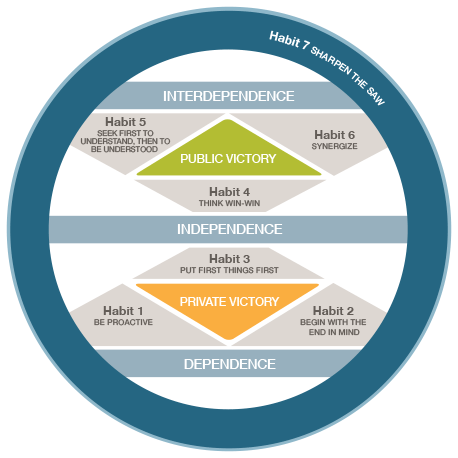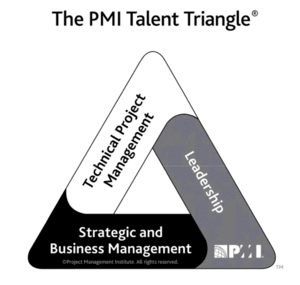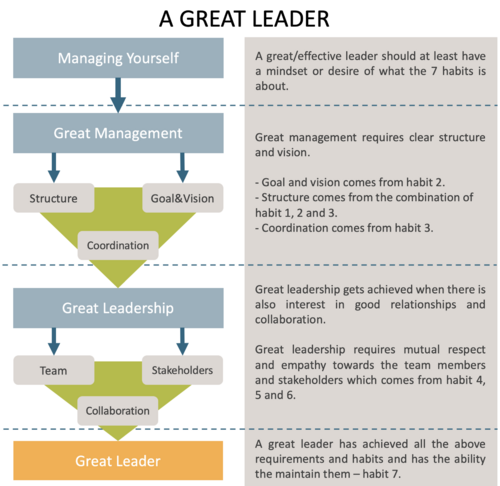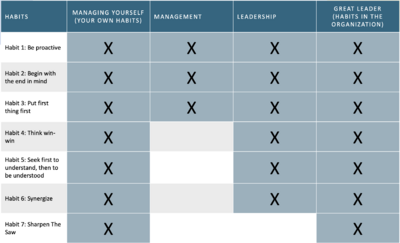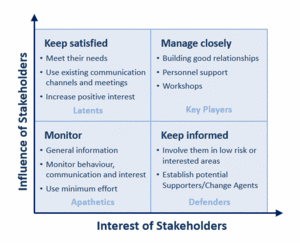The 7 Habits of Highly Effective People by Stephen R. Covey
Edited by Cecilia Thuy Duyen Nguyen-Cong (s184300)
The 7 Habits of Highly Effective People is a self-help book written by Stephen R. Covey and was published first time in 1989. [1] Covey presents seven habits that are fundamental principles to effectiveness in life in the modern society, where life has become more complex, stressful and demanding. The book relates to business management and the professional life and includes advice to self-management. The book has sold more than 25 million copies worldwide and is awarded as one of the 25 most influential business management books by the US TIME’s magazine and is an International Bestseller. Even though the book was written over 25 years ago, its wisdom is timeless and has inspired presidents, CEO’s, educators and many other people over the world. [2]
In the book Covey quotes from the Greek philosopher, Aristoteles; “We are what we repeatedly do. Excellence, then, is not an act, but a habit.” [1][p. 65] This quote says a lot about the big idea of The 7 Habits, as the book tries to inspire business men and women to see the world in a specific way to motivate them in a structural life, where they can have control and be effective.
This article will explain the essentials of the concept of the seven principles or habits as Covey presents them. This article will also include the approach of the concept related to project management. Lastly, there will be a critical reflection of the application of the principles.
Contents |
The Concept of The 7 Habits
Effectiveness is a function of two factors, on one hand it is about what is produced and on the other hand it is about the ability to produce. That is a balance that Covey calls the P/PC-balance: P for the production and PC for the production capacity. It is the paradigm of effectivity that The 7 Habits is based on, since a manager has to want to achieve the end-product but also have to provide the skills and knowledge to complete the achievement. This balance between the desire and the workload should be acceptable in order to have sustainable effectiveness. [1][p. 73]
The 7 Habits is a concept that examines and adjusts a person’s character, motives and behavior. The foundation of its knowledge lies in the idea of how you perceive the world and should interact with others. Overall, the idea about The 7 Habits is to manage your time and goal, define the character you want to be and build productive relationships, which are all great skills to have in a professional environment both as a leader and as employee. The concept is not meant to be a quick fix but a process of change and growth, as the quote from Aristoteles also sets focus on. [1][p. 65]
The 7 Habits are created upon a maturity scale, and together The 7 Habits provide an integrated method to personal growth and development. The order of the maturity scale starts from the lowest level, dependence, secondly independence and then interdependence as the highest level of maturity.
The 7 Habits are described as the steps that moves a person forward in the maturity scale. Covey describes the first three habits(1-3) as the ones that take a person from dependence to interdependence – this is the private victory. The habits from four to six(4-6) takes a person from independence to interdependence – this is the public victory. Lastly the 7th habit is about “Sharpen The Saw” and is the maintaining and order of all the 6 habits – this is beyond the maturity scale and is about renewal. Covey illustrates the whole paradigm of The 7 Habits as shown in the figure below. The model has a bottom-up structure, that indicates, that you have to win the private victory in order to win the public victory etc. Covey explains that in order to create effectiveness we should acknowledge the P/PC-balance in an interdependent world. Thereby, we can focus on the problems with the opportunities to increase PC and achieve a public victory. [1][p. 263-265] A habit can make you do great things but it can also be the block on the road stopping you for what you desire to achieve, which definitely can be associated to the professional life and in relation to management.
Here is a list of the seven habits followed by a brief description of the idea behind it. There will be detailed descriptions of the application to achieve and utilize the habits regarding management in section 2.1.
Habit 1: Be proactive...
- ...takes two opposites, reactive and proactive, into account. The habit of being reactive means that you are governed by mood, emotions and impulses. A reactive person complains about the things they cannot control and does not take action or ownership of the things they should do. A habit of being proactive starts with choosing our own reaction. And from the ability to have acknowledgment, have conscience and taking responsibility we will then become proactive.[1][p. 97]
Habit 2: Begin with the end in mind...
- ...sets focus on a person’s vision in life and asks, “What are we trying to accomplish”. The idea is that everything you do should centers around the things which ultimately creates value for your end-goal. It is about focusing on the things, that you want to be remembered for and be identified with. This habit is about declaring our own personal mission statement and stick to it to achieve efficiency. [1][p. 146-191]
Habit 3: Put first thing first...
- ...is about discipline to prioritize our day-to-day actions. Covey is questioning “What unique thing could you do (which you are not doing for the moment) – which if you did it regularly – it would make a huge difference in your life”. It is here the popular matrix important/unimportant * urgent/non-urgent about prioritizing is introduced. To prevent and avoid being stressed and burned out, it is about proactively spending more time on the things that are important and non-urgent. [1][p. 200-210]
Habit 4: Think win-win...
- ...is about establishment of effective interdependent relationships by thinking in win-win situations for mutual benefit and satisfaction. It is based on the paradigm that there exists success enough for all, and that one's success must not be achieved at the expense of another’s failure. Win-win is then a philosophy about human interaction, to have high courage and consideration. Win-win situations cannot win in a competitive environment, and therefore it is a proactive choice to align the system to support it. [1][p. 272-280]
Habit 5: Seek first to understand, then to be understood...
- ...is about communication and empathy. Empathetic listening is not only about listening with your ears but also with your heart and eyes, since people not only communicate with their words but also with the body-language and tone of voice. By listening to others, you can understand people’s different views and its influence regarding collaborations and other interdependent situations. It is also relevant in regards to seeking to understand the problem and the other person’s needs and concerns before prescribing a solution. [1][p. 312-330]
Habit 6: Synergize...
- ...means that the whole is greater than the sum of its parts, or said in other words, one plus ones gives three or more. This habit is about being open to new opportunities, alternatives and chances. Synergistic communication is not only about the end-result but the feeling of enthusiasm, trust and safety toward something greater and better. With synergistic communication, the environment allows people to think aloud, be creative and further develop other people’s ideas, which creates a collective vision and mutual respect. [1][p. 348-354]
Habit 7: Sharpen The Saw...
- ...is about maintaining the other habits by renewal which have four dimensions: physically, spiritually, mentally and socially. The 7 Habits is closely connected and therefore, improvement of one habit also positively affects the other habits. Covey calls the habit “Sharpen The Saw” based on his description: It takes much more time and is more exhausting to saw a tree with a blunt saw than it takes to first taking the time to sharpen it, and then saw the tree faster and easier – resulting in greater effectiveness. The process of renewal is about growth and continuous improvement. [1][p. 382]
...If you want to have a deeper understanding of each habit, it is recommended to look in the article linked here [3]
The 7 Habits in Management
This section will dive into the aspects of where the habits create value in management. In the book The 7 Habits includes suggestions of tools for how to achieve each habit, but how exactly can a person use these habits to create value regarding the whole structure of managing a project, program or portfolio and teams? How can a person become a great leader and an effective manager?
In the British and PMI Standard both regarding projects, programs and portfolios there is a mutual definition of the role as a manager. As one example taken from the PMI Standard (Guide to the Project Management Body of Knowledge the definition of the role of a project manager) the definition is:
- “The project manager plays a critical role in the leadership of a project team in order to achieve the project’s objectives. (…) a project manager may be involved in evaluation and analysis activities prior to project initiation. These activities may include consulting with executive and business unit leaders on ideas for advancing strategic objectives, improving organizational performance, or meeting customer’s needs.” – PMI Standard [4] [p.51]
The PMI Talent Triangle includes the skills needed for a project manager. As quoted from the PMI Standard, a project manager's role is [4][p. 56]:
- Technical project management: The knowledge, skills, and behaviors related to specific domains of project, program, and portfolio management. The technical aspects of performing one’s role.
- Leadership: The knowledge, skills, and behaviors needed to guide, motivate, and direct a team, to help an organization achieve its business goals.
- Strategic and business management: The knowledge of and expertise in the industry and organization that enhanced performance and better delivers business outcomes.
- Achieving the objectives
- Consulting with relevant persons to:
- Advancing strategic objectives
- Improving organizational performance
- Meeting customer’s needs
The rest of this article will take this definition of a project manager as the focal point, although it could also have been a definition from one of the other standards regarding program or portfolio. In addition, to understand how The 7 Habits plays a role regarding management, it is important to look at the difference between leadership and management.
- Leadership vs. Management
- Covey use the term: Management is an effective ascent on the ladder of success, where leadership determines whether the ladder stand up against the right wall. [1][p. 138] Leadership is about inspiring towards a common goal, it is about doing the right things - efficiency. Management is about planning and delegating, it is about doing things right - effectiveness. Good management including the vision, structure and planning itself does not make good leadership without the ability to convey it. [5]
Overall, The 7 Habits can be used as guidelines to become a great leader and achieve success as a manager. From the knowledge of 1) the concept of The 7 Habits, 2) the definition of the role as a manager and 3) the definition of the difference between leadership and management, there are certain aspects where each habit plays an important role. Based on that knowledge, the model “A Great Leader” illustrates how The 7 Habits are key to become a great leader.
Application of The 7 Habits in Management
In this section there will be detailed descriptions of the application of The 7 Habits based on the model how to become a great leader in project management. To become a great leader, there are three aspects that should be achieved:
- Managing yourself by having self-knowledge and a mindset as The 7 Habits represents.
- Great management: you should have the ability to plan, prioritize and manage others to achieve the projects objectives.
- Great Leadership: you should have the ability to convey and inspire your coworkers/team members towards the same vision.
The 7 Habits opens up the mind to new ways of thinking. And by seeing things differently, we can do things differently towards something better and more effective. To the right is a table that shows an overview of how each habit is a part of the process.
Managing Yourself
The first step of becoming a great leader is to strive to have the mindset The 7 Habits represents. It is about looking inside our own character and strive to be the leader we want to be. What legacy do we want to leave? In the professional environment a person gets promoted as a leader because of their individual competencies, and not necessarily their ability to lead and manage other people. [6] From the PMI Standard the manager is explained as the conductor leading a large orchestra. [4] As a manager it is first of all important to manage yourself effectively, by being proactive and be responsible before you can lead others. Otherwise, the symphony(product) will become disorganized and incoherent, resulting in a bad experience for the spectators(customers). It is important that a leader is independent (habit 1-3) as well as interdependent (habit 4-6). Habit 1-3 would ensure the ability to manage yourself, before managing others. Habit 4-6 would give the ability to have mutual respect, know how to listen and synergize in communication, which all results in maintaining good interdependent relationships, have sustainable cooperation and deliver the optimal solutions.
Great Management
To manage a project, it needs a vision, structure and plan on how to achieve the objectives. In the PMI Standard this is important in the first three steps in the planning process [4][p. 25]: Project integration management, project scope management and project schedule management.
Habit 1: Be proactive is relevant for teams especially when it comes to carrying out projects and working in fast environments. It is important to start by focusing on the things that is in control, instead of stressing yourself and your team with the problems that are uncontrolled or still unknown. As a project manager you are the first responsible for being proactive to find a solution, keep moving forward and take your team in your hand and bring them with you in collaboration. Here it also important to delegate tasks to the team members so that they also can be proactive in their workflow. For the project manager it is important to adapt and overcome obstacles, otherwise the outcome is that the project gets stuck in the process. [1][p. 125-127]
Habit 2: Begin with the end in mind is important to make a clear scope and vision, to make sure that every task is centered around it. As a project manager the most effective workflow exist, if all members understand the common goal and works towards it together. If there is no unambiguous guideline towards a common vision, team members can get lost or end up on a sidetrack, which will prolong the process, create confusion and result in a poor quality of the delivery for the project. In worst case scenarios the project can fail completely. [1][p. 189]
- Start with the clients desired outcomes
- Make goal, scope, build plan that delivers.
- What do they really need?
Habit 3: Put first thing first is about prioritizing tasks, which the Time Management Matrix is a tool for. To have an effective workflow in projects it is important to focus on the things that are important. Overall, there should be a balance so that most tasks are placed in quadrant two (important, non-urgent), because too many tasks in quadrant one (important, urgent) can result in stress.
The suggestion from habit 3 to a project manager are: [1][p. 212-215]
- The first discipline to focus on quadrant two is to identify the important overall tasks and each individual team-members role regarding the tasks.
- The next step is to create a WBS, by identify the small tasks within a big task towards the scope. These small tasks should reflect the overall tasks from step 1.
- Schedule the tasks either with regard to a specific action plan, or simply within a manageable period of time.
- Daily adjustment. When you have an overview of the role distribution, tasks and the final scope there will be a natural prioritization.
- Delegation. It is also important to delegate. When we think of delegation of time, it is about effectiveness. If we delegate to people, it is about efficiency. Often delegation and transfer of responsibility is a profitable activity which increases the P/PC-balance. (This is also public victory and involves habit 4) [1][p. 221-222]
Great Leadership
As a project manager, leadership is about inspiring and lifting the team towards the same goal. It is about trust, safety and collaboration. If the project manager is able to make people look up and strive to achieve success together, that would be considered a great leader. It is about unleashing the full potential of the team behind the project, to get the best and highest outcome.
Regarding the Habit 4: Think win-win the P/PC-balance is important when you think of a win-win situation. This is where you take the relation between the employees, customers and stakeholders into account. Quoted from Covey: “Always be to your employees, as you would be to your best costumers.” [1] [p. 77] To maintain a good P/PC-balance you should motivate your team making sure that all win from the benefits of the goal. The benefit should also go both ways with stakeholders, especially regarding contracting with consultants or subcontractors. A project’s win-situation is, if the deliverable of the project lives up to the objectives, and when it is on-time and on-budget. But if a project should fail, it is important not to blame anyone, but taking the responsibility as a team. A structured leadership is about incentivizing the relevant team members to identify the mistake early, and then putting it right in collaboration.
Habit 5: Seek first to understand then to be understood is about listening to understand. Understanding the problem or someone’s needs is one of the important roles as manager. A manager should communicate with different relevant people associated with the task of advancing strategic objectives, improving performances and meeting costumers' needs to get the optimal outcome from the project. To have effective communication in teams, it is important to continuously give and receive feedback on performance, to ensure that the criteria and expectations are aligned. When it comes to the effective communication with costumers, it is important to have empathy, listen to their priorities and understand their need to find the best solution. It is about understanding the situation. By going into the mindset of the people you work with and work for, you will truly understand them and will do a better job of serving them.
Habit 6: Synergize believing that 1+1 = 3 or 10. It is about being creative and seeking new opportunities. In a competitive environment team members are not willing to share information and think aloud, since they only think about their own success (which is also the opposite of a win-win – habit 4). When a manager has a synergized way of thinking and inspires the team members to have the same, the relationship between team members allows them to collaborate and trust each other through critical times. To ensure optimal development to better solutions and wiser decisions in the team and within the project, it is important to have confidentiality and loyalty.
A Great Leader
To be a great leader as already mentioned is the achievement of managing yourself and having the ability to show great management and leadership. The Habit 7: Sharpen The Saw ensures that the maintaining of the six habits keeps adapting and renewing. As a project manager it is important to continue to improve the capability of the team by investing the time to prepare them to become more efficient with less effort. When you take the time before-hand adapting the way of managing by learning from failures and experiences, you can save time in the future, minimize effort and speed up the process. In that way a project manager can build an effective system and hone the process.
Limitation
The book itself doesn’t include any direct tricks or tools in management, but rather shape the way we see. The 7 Habits is an ideal version of effectiveness, but in reality, no one is complete. As mentioned before, it is always necessary to continuously keep growing both personally and in teams. People makes mistakes and have ups and downs, and therefore The 7 Habits can be a guideline or motivation to come back on track. In relation to the interdependence, it is difficult only to have interdependency if it is not reciprocated, and not all people have the acknowledgement of the philosophy that The 7 Habits provides. However, the acknowledgement itself regarding The 7 Habits can also be used to understand others, and if not convinced, it can inspire them too. The strength is also to understand the opposites of the 7 Habits i.e., if an employee or team member struggles and have difficulties with collaboration. It is important to remember that The 7 Habits are not indicators to tell if some people are not good enough if they cannot live up the all the habits, and it does not make you a bad person. All people are different and act differently, and this philosophy is not the only philosophy that can be interpreted towards management and leadership.
Annotated Bibliography
"The 7 Habits of Highly Effective People, by Stephen R. Covey", Danish version "7 Gode Vaner": Gyldendal Business, 4th edition, 2020 - This book includes the background of The 7 Habits. Stephen R. Covey describes the principles and details of The 7 Habits provided by himself. This is the 30th anniversary edition.
"Guide to the Project Management Body of Knowledge (PMBOK® Guide)",6th Edition, Project Management Institutes(PMI) Standards for project management - This book provides the definition of the role of a project manager used in this article.
References
(Summarize and outline the relevance of each key reference (100 words per reference))
- ↑ 1.00 1.01 1.02 1.03 1.04 1.05 1.06 1.07 1.08 1.09 1.10 1.11 1.12 1.13 1.14 1.15 1.16 1.17 [The 7 Habits of Highly Effective People, by Stephen R. Covey, Danish version: Gyldendal Business, 4th edition, 2020]
- ↑ The 25 Most Influential Business Management Books, by Stephen Gandel, TIME BUSINESS GUIDES, August, 2011
- ↑ 7 Habits of Highly Effective People (Summary & Takeaways), by Anum Hussain, HubSpot,July 2019
- ↑ 4.0 4.1 4.2 4.3 [Guide to the Project Management Body of Knowledge (PMBOK® Guide), (6th Edition)]
- ↑ The Difference Between Leadership and Management, by Next Generation, 2018
- ↑ Enable your leaders and managers to lead frontline teams., Franklin Covey
